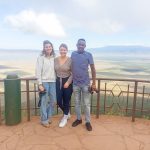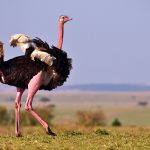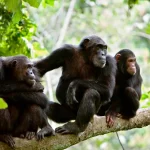
- Mount Kilimanjaro National Park: A Guide to the Highest Peak in Africa
-
Written by : Tarimo Expeditions
Mount Kilimanjaro National Park is a must-see destination for nature lovers and adventure enthusiasts. Located in Tanzania, the park is home to the highest peak in Africa, which attracts thousands of visitors every year. In this article, we will explore the park’s history, geography, wildlife, and what to expect when climbing the mountain.
History of Mount Kilimanjaro National Park
Mount Kilimanjaro National Park was established in 1973 and covers an area of 1668 square kilometers. The park was created to protect the natural environment of Mount Kilimanjaro and its surrounding areas. Mount Kilimanjaro is a dormant volcano and has three volcanic cones, namely Kibo, Mawenzi, and Shira. The mountain’s name comes from the Swahili word “Kilima,” which means “mountain,” and “Njaro,” which means “whiteness.”
The local Chagga people have lived around the mountain for hundreds of years and have developed a unique culture and way of life. The mountain’s proximity to the equator and its height have made it an important source of water for the region, and the Chagga people have developed an intricate system of irrigation canals and terraced agriculture to farm the land.
Geography of Mount Kilimanjaro
Mount Kilimanjaro is located in northern Tanzania, close to the border with Kenya. The mountain is part of the East African Rift system and is located on a tectonic plate boundary. The mountain has three volcanic cones, Kibo, Mawenzi, and Shira, and is a dormant volcano. The highest peak, Uhuru Peak, stands at 5,895 meters (19,341 feet) above sea level and is the highest point on the African continent.
The mountain has a unique ecosystem, with distinct vegetation zones that vary with altitude. The lower slopes of the mountain are covered in dense rainforest, which gradually gives way to heath and moorland. Above 4,000 meters, the mountain is mostly covered in an alpine desert, and the summit is a barren, icy landscape.
Wildlife in Mount Kilimanjaro National Park
Mount Kilimanjaro National Park is home to a variety of wildlife, including elephants, buffalo, leopards, and various antelope species. The park is also home to a variety of bird species, including eagles, hawks, and vultures. The lower slopes of the mountain are covered in dense rainforest, which is home to monkeys and other primates. Above the treeline, there is little wildlife, but visitors may catch a glimpse of hyraxes, small furry mammals that are related to elephants.
Climbing Mount Kilimanjaro
Climbing Mount Kilimanjaro is a popular activity, and thousands of people attempt the climb every year. However, the climb is not easy, and visitors should be prepared for a strenuous and challenging experience.
Preparations before Climbing
Before attempting to climb Mount Kilimanjaro, visitors should take some time to prepare themselves physically and mentally. Climbing the mountain requires a high level of fitness, and visitors should spend several weeks leading up to their climb engaging in regular exercise, including cardio and strength training. It is also important to stay hydrated and get plenty of rest in the days leading up to the climb.
Visitors should also take the time to research the different routes to the summit and choose the one that is best suited to their fitness level and experience. The different routes vary in difficulty, length, and scenery, and visitors should choose the one that will provide them with the best experience.
Routes to the Summit
There are several routes to the summit of Mount Kilimanjaro, each with its own unique characteristics and challenges. The most popular routes are the Marangu, Machame, Lemosho, and Rongai routes.
The Marangu route is the most popular and is also known as the “Coca-Cola” route. It is the easiest and shortest route, but it is also the busiest and the least scenic.
The Machame route is the most scenic route and is known as the “Whiskey” route. It is a longer and more challenging route than the Marangu route, but it is also less crowded.
The Lemosho route is a relatively new route and is known for its scenic beauty. It is a longer and more challenging route than the Machame route, but it is also less crowded.
The Rongai route is the only route that approaches the mountain from the north and is a less crowded and less scenic route than the other routes.
Climbing Permits and Fees
Visitors who wish to climb Mount Kilimanjaro must obtain a climbing permit and pay a fee. The fees vary depending on the route chosen and the length of the climb, but they typically range from $1,000 to $1,500 per person. The fees cover park entrance fees, camping fees, rescue fees, and other expenses.
Best Time to Visit Mount Kilimanjaro National Park
The best time to visit Mount Kilimanjaro National Park is during the dry season, which runs from June to October and from December to March. During this time, the weather is dry and clear, and there is less chance of rain or snow. The dry season is also the busiest time, and visitors should book their accommodation and climbing permits well in advance.
Accommodation and Dining Options in the Park
Mount Kilimanjaro National Park offers a range of accommodation options, including campsites, huts, and lodges. Visitors who plan to climb the mountain will need to stay in one of the park’s campsites or huts, as there are no hotels on the mountain.
The campsites and huts offer basic facilities, including sleeping quarters, bathrooms, and dining areas. Visitors should bring their own sleeping bags, as they are not provided.
There are also several dining options in the park, including restaurants, cafes, and snack bars. Visitors should bring their own food and water for the climb, as there are limited opportunities to purchase food or water on the mountain.
Other Activities in Mount Kilimanjaro National Park
In addition to climbing the mountain, there are several other activities to enjoy in Mount Kilimanjaro National Park. Visitors can take a wildlife safari in the park, go bird watching, or take a cultural tour of the local villages. There are also several hiking trails and nature walks in the park, which offer stunning views of the mountain and its surroundings.
Conservation Efforts in Mount Kilimanjaro National Park
Mount Kilimanjaro National Park is committed to conservation and sustainability, and the park has implemented
several initiatives to protect the park’s natural resources. These initiatives include reforestation programs, waste management programs, and water conservation programs.
The park also works closely with local communities to promote sustainable tourism and to ensure that the park’s natural resources are preserved for future generations.
Mount Kilimanjaro National Park is a unique and beautiful destination that offers visitors the opportunity to climb one of the world’s highest mountains, as well as to explore the park’s wildlife, culture, and natural beauty. Visitors should take the time to prepare themselves physically and mentally for the climb and should choose a route that is best suited to their fitness level and experience.
The park offers a range of accommodation and dining options, as well as several other activities, making it a great destination for both adventure seekers and nature lovers.
FAQs
- What is the best time of year to climb Mount Kilimanjaro?
The best time to climb Mount Kilimanjaro is during the dry season, which runs from June to October and from December to March.
- How long does it take to climb Mount Kilimanjaro?
The length of time it takes to climb Mount Kilimanjaro varies depending on the route chosen, but most climbs take between five and nine days.
- What is the cost of climbing Mount Kilimanjaro?
The cost of climbing Mount Kilimanjaro varies depending on the route chosen and the length of the climb, but it typically ranges from $1,000 to $1,500 per person.
- What should I pack for my climb of Mount Kilimanjaro?
Visitors should pack warm and waterproof clothing, a sleeping bag, a first aid kit, and plenty of food and water.
- Is it safe to climb Mount Kilimanjaro?
Climbing Mount Kilimanjaro is generally safe, but visitors should take the necessary precautions to avoid altitude sickness and should only attempt the climb if they are physically and mentally prepared.
Best of Our Tanzania Safaris
From the Wildebeest Migration to the Big 5 and Tropical White Sand Beaches
Explore the best of Tanzania with our curated collection of safaris packages. Experience breathtaking wildlife, stunning landscapes and cultural richness, there’s something for everyone.



